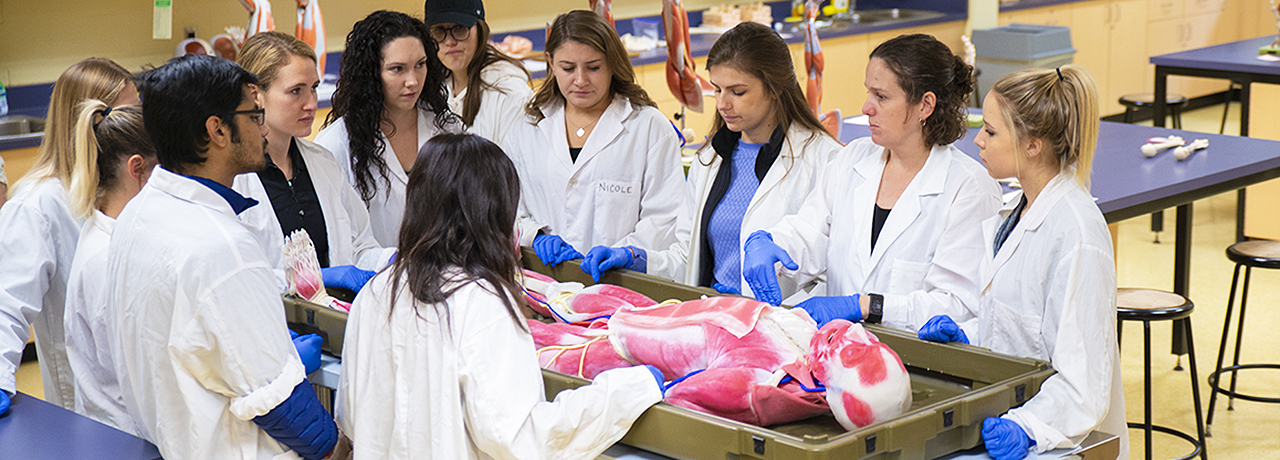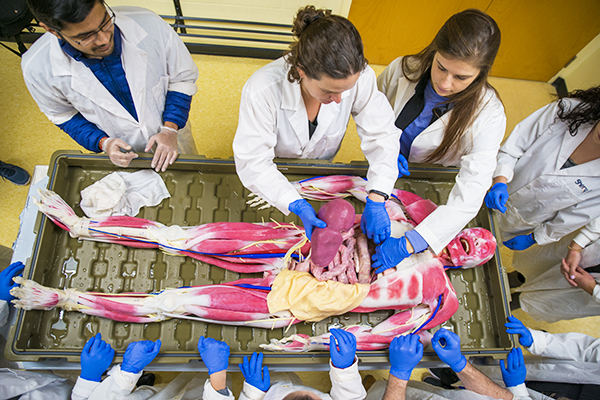
Students in Laurier’s Department of Kinesiology and Physical Education are being introduced to a whole new way of learning anatomy in the lab.
Besides the plastic models and textbooks students are used to seeing, they’ll now find Sara and Rita, two hyper-realistic synthetic cadavers. The models, the first full-sized synthetic cadavers in Canada, according to the Florida-based manufacturer, SynDaver, are complete with every bone, joint, muscle, organ and tendon found in the human body in vivid and colourful detail. The models also contain major parts of the nervous and vascular systems.

Sara and Rita will be used throughout the year by students in undergraduate anatomy and physiology classes.
"You don’t memorize anatomy, you learn it by doing, by getting involved," said Michael Cinelli, associate professor of Kinesiology and Physical Education.
Tendons, muscles and organs on the synthetic cadavers can be manipulated, dissembled and reassembled so students learn how parts work together. The models don’t just look real, they feel real, too. Made out of plant fibre and water, the cadavers are continually soaked in water to retain their lifelike moisture and texture.
Because they’re synthetic, storing the cadavers doesn’t require the same infrastructure as a true cadaver lab, such as refrigeration, ventilation and drainage systems. Synthetic cadavers are also safer because students and faculty aren’t exposed to chemicals like formaldehyde and can last indefinitely if well-maintained.
Laurier's Faculty of Science also plans to invite high school students to visit the lab to learn about the cadavers through an outreach program in partnership with the University of Waterloo’s School of Anatomy.